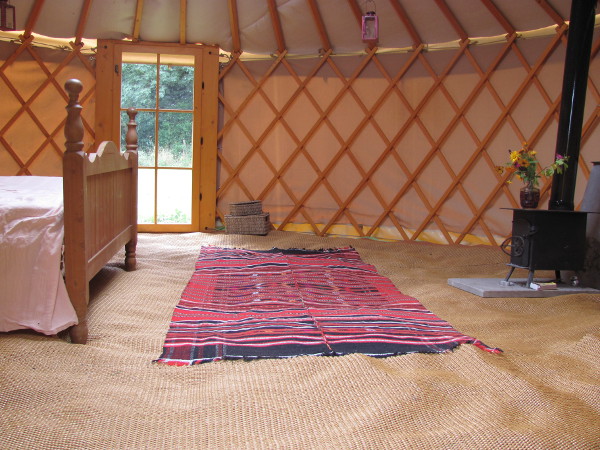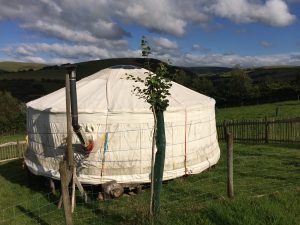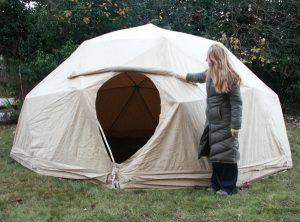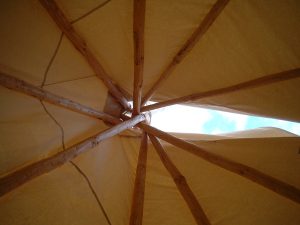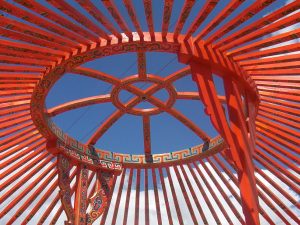Here’s an interview with David Field of World Tents about how a tipi, yurt or dome could be used as a spare room in the garden.
Lowimpact.org: Hi David – so who might this type of ‘spare room’ be for?
DF: People who want their own little private haven that they can retreat to and feel at peace – to be in their own space, undisturbed, to do their own thing.
Lowimpact.org: For example?
DF: An art space, some kind of studio or workshop, or for meditation, yoga etc. But especially – for teenagers.
Lowimpact.org: Why especially teenagers?
DF: How can I put this? So that they can be free to have their own space, separate from the house, to do what teenagers do (best not to think about it) – they can have friends round, play music – whatever. A bit of autonomy. But also, a teenager will only need his or her own room for a few years – before they fly the nest. With a temporary spare room like this, the homeowners aren’t left with a house that’s actually too big for them.
Lowimpact.org: What about neighbours?
DF: Well, artists, meditators and yoga practitioners probably won’t make much noise – but teenagers might. It’s fine if you have a big garden, so the yurt/dome/tipi can be well away from other people. But it’s also OK if the teenagers understand that to continue to have their separate space, they mustn’t upset the neighbours. it’s up to them.
Lowimpact.org: How would you provide power?
DF: There are several options. There are special solar pv panels that can be sewn into the canvas of the yurt/dome – or they can be stand alone, in conjunction with batteries. This will need a bit of looking into. Otherwise, you could run a cable from the house – underground, even.
Lowimpact.org: What about bathroom facilities?
DF: If you were really keen you could have a separate yurt/dome/tipi as a compost loo / solar shower – but it may be easier to let the occupants use the facilities in the house.
Lowimpact.org: What about heating?
DF: In a yurt or dome, a wood stove or a rocket stove. A tipi has a fire in the middle of the floor. The flue for the wood stove/rocket stove will pass through the roof. There are special collars to use for this.
Lowimpact.org: What about planning permission?
DF: I think planning permission would be required if it was a more-or-less permanent structure. I’ll talk to a friend who is a planner, and get back to you with more details on this one.
Lowimpact.org: Would this work in winter as well as summer?
DF: Yes – Mongolia is a much colder place than Britain in winter, and most people live in yurts (gers in Mongolian) all year round. With a woodburner it will be fine, and yurts can be insulated with felt.
Lowimpact.org: What are the cost implications?
DF: Well, much cheaper than moving house or building an extension, that’s for sure. For a basic 5m yurt, you’re looking at something like £3k, or for a 5.5m tipi or a 6m geodesic dome, around £1800.
Lowimpact.org: What about waterproofing?
DF: The canvas is already waterproofed, and flame/rot retardant.
Lowimpact.org: What are the environmental benefits of this idea?
DF: Compared to a brick and mortar extension, there’s no cement (huge carbon emissions) and much lower embodied energy. World Tents use local timber and sew our own canvases. The canvas itself comes from China or India though, and the nature of today’s cotton industry means that about 60% of all cotton grown is now GM – so not ideal, but there will need to be wider political change before we can tackle that.
Lowimpact.org: Thanks David – we think it’s a great idea. Good luck!

